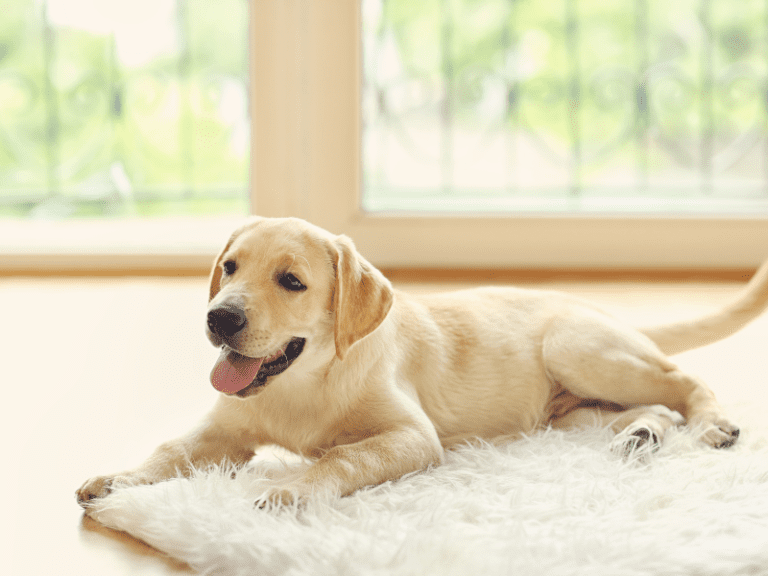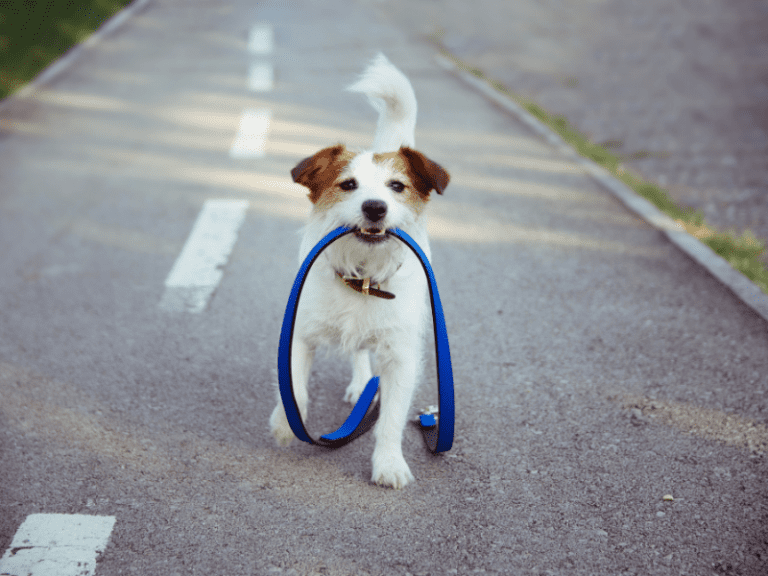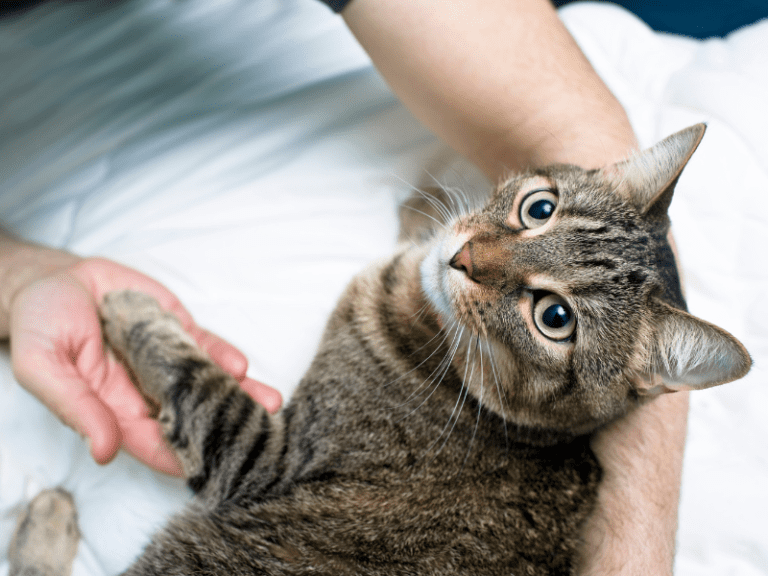The Best Dog Collars for Your Pet’s Safety
FULL DISCLOSURE: The links I share in this course ARE my affiliate links. This means I earn a commission, at no extra cost to you. In fact, sometimes you’ll get a discount or free credits just FOR using my link. 🙂
Dogs are part of the family, and it's important to ensure they are safe, just like any other family member. This includes finding the best type of collars for your dog.
One way to do that is by choosing the right dog collar.
Many types of dog collars are on the market, so it can be difficult to know which is best for your pet.
This blog post will discuss the different types of dog collars and how to choose the right one for your pet's safety!
So Many Dog Collars

If you are anything like me, you love your dog more than anything in the world. Like any family member, you want to ensure they have everything they need to be happy and healthy.
So when it comes time to choose a collar for your furry friend, it is important to take the time to find one that is perfect for them. With so many options available on the market, it can be tough to decide which is the best for your pup.
Never fear!
I am here to help guide you through the process of finding the perfect collar for your beloved dog.
From function to fashion, there are a few things you will need to consider before making your purchase. Once you have found the perfect fit, you will see how much happier and healthier your pup can be.
If you would like to see the dog collars in action watch this video: https://www.youtube.com/watch?v=qWT3mgg4-OM
Different Materials Used for Dog Collars
The most common type of dog collar is the basic nylon model. These collars are inexpensive and easy to find, making them a great option for budget-conscious pet owners. However, they are not particularly durable and may not provide enough support for dogs who pull on the leash.
Consider a leather or metal option if you are looking for a collar that will stand up to heavy use. These collars are more expensive, but they are also much more durable.
There is also an escape-proof collar for extra protection against escape artists. These collars feature a variety of safety features, such as quick-release buckles and reinforced stitching. They are not cheap, but they could be a lifesaver if your dog is a Houdini-in-training.
Types of Dog Collars

At first glance, it may seem like there is not much to a dog collar. After all, it is just a piece of fabric or leather that goes around your dog's neck.
Wrong!
In fact, there is a lot more to a dog collar than meets the eye. For starters, the type of collar you choose can significantly impact your dog's comfort and safety. If the collar is not properly fitted, it can slip off of your dog's neck, making your pup able to run off.
When broken down, there are five different types of collars. These collars are:
- Flat Collar
- Leader Head Collars
- Choke Collars
- Harness
- Prong Collar
Flat Collar

Flat collars are the most versatile type of collars and can be worn for various purposes. Flat collars are made from a simple piece of fabric or leather and fasten around the dog's neck with a buckle or velcro closure. They are lightweight and comfortable for dogs, making them ideal for everyday use.
Regular flat collars are the most common type but can also be the most dangerous. This is why these collars should never be used for dog training. This is because they can easily slip off and pose a severe hazard if you have difficulty controlling your dog while walking.
An owner pulling on a flat leash collar can cause serious neck problems later in life. The dog's neck muscles tighten when the leash is pulled on. This tightening can lead to cervical subluxations, which in turn can cause disc problems.
These disc problems often do not show up until later in life, and at that point, owners either have to put their dogs on medication or resort to surgery.
However, flat collars are great for dogs to wear around the house.
Leader Head Collars
Have you ever been out for a walk with your dog, only to have them start tugging and pulling in the opposite direction? If so, then you know how frustrating it can be to try and keep them on the path.
That is where leader headcollars come in. These collars are designed to fit snugly around your dog's head, with a padded inner band for comfort. The outer band is sturdy leather, with a brass ring for attaching a leash.
These collars are designed to help train your dog to walk where you want them to. The idea is simple- by attaching a leash to the front of the collar, you can more easily turn your dog's head in the direction you want.
As a result, leader head collars can be invaluable for training your dog to walk politely on a leash. When using the leader head collar, you need to be careful so that you do not turn your dog's head too sharply and cause upper neck problems.
Choke Collars

A choke collar is a dog collar designed to tighten around the neck when pulled. The theory behind using a choke collar is that it will stop a dog from pulling on a leash by causing an uncomfortable sensation.
Choke Collars are one of the most popular types of training collars on the market, but they can also be one of the most controversial.
Proponents of choke collars argue that they are an effective training tool, while opponents claim that they can cause physical and psychological damage to dogs.
So, what is true? Are choke collars safe, or should they be avoided?
There is no definitive answer as both sides make valid points. Choke collars do have the potential to cause injury if misused, but if used correctly, they can be a safe and effective way to train a dog.
It is important to consult with a qualified trainer before using a choke collar, as they can help you to use it in a way that minimizes the risk of harm. They can also train you how to wear a choke collar properly.
Ultimately, the decision of whether or not to use a choke collar is up to the individual dog owner.
Harness

A dog harness is a piece of equipment placed on a dog's body. It is used to help the dog be controlled when on a leash and to help prevent the dog from getting away.
The harness typically has a strap that goes around the dog's neck and another strap that goes around the dog's chest. There are also usually two D-rings on the back of the harness. These are used to attach to a leash.
Harnesses are available in various sizes, so choosing one that is appropriate for your dog's size and proportions is important. In addition, some harnesses have special features such as reflective strips or built-in storage pockets.
No matter what type of harness you choose, it is important to make sure that it fits your dog properly and is comfortable for your furry friend to wear.
If the wrong size is worn, the harness could cause subluxations in the lower neck, shoulder, chest, and foreleg area. A harness that is too small can squish the dog's body.
Prong Collar

If you have ever taken your dog for a walk and found yourself being pulled along like a rag doll, then you may be interested in learning about prong collars.
Also known as pinch collars, these devices provide a gentle correction when your dog starts to pull on the leash.
The collar consists of a series of metal prongs arranged in a V-shaped pattern. When the collar is fitted correctly, the prongs should sit snugly against your dog's neck without causing any discomfort. If your dog starts to pull, the prongs will press into his skin, providing an unpleasant sensation that will convince him to stop.
While prong collars may not be the most stylish option, they can be very effective at training your dog to walk politely on a leash.
The slightest tug on the collar distributes pressure evenly around the dog's neck when training. This collar has been found to cause the most minor damage when used correctly.
Conclusion
So, which is the best dog collar for your pup? It depends on their personality and what kinds of activities you will take them. Ultimately, finding the perfect fit for you and your furry friend is important.
Do some research, ask for recommendations, and take your dog out for a test run with each type of collar before making your final decision.
With so many options available, there is sure to be one that fits both you and your dog's personality and style. Comment below which collar is your favorite for which activity.
Are you wanting to let your dog show off their fancy collars without using the leash? Learn about the best dog breeds for walking off leash at https://visionpetcare.com/the-best-dog-breeds-to-take-off-leash-hiking/







